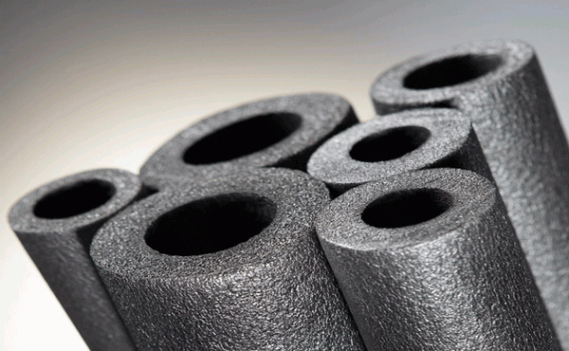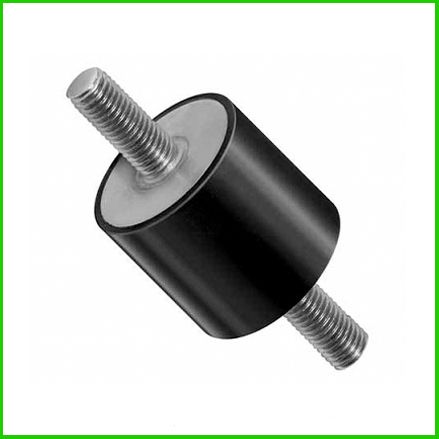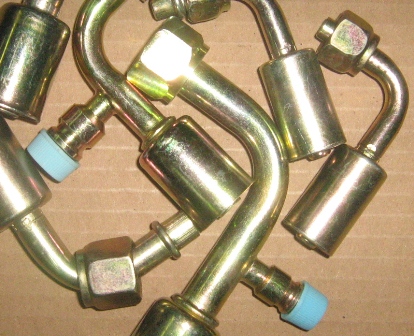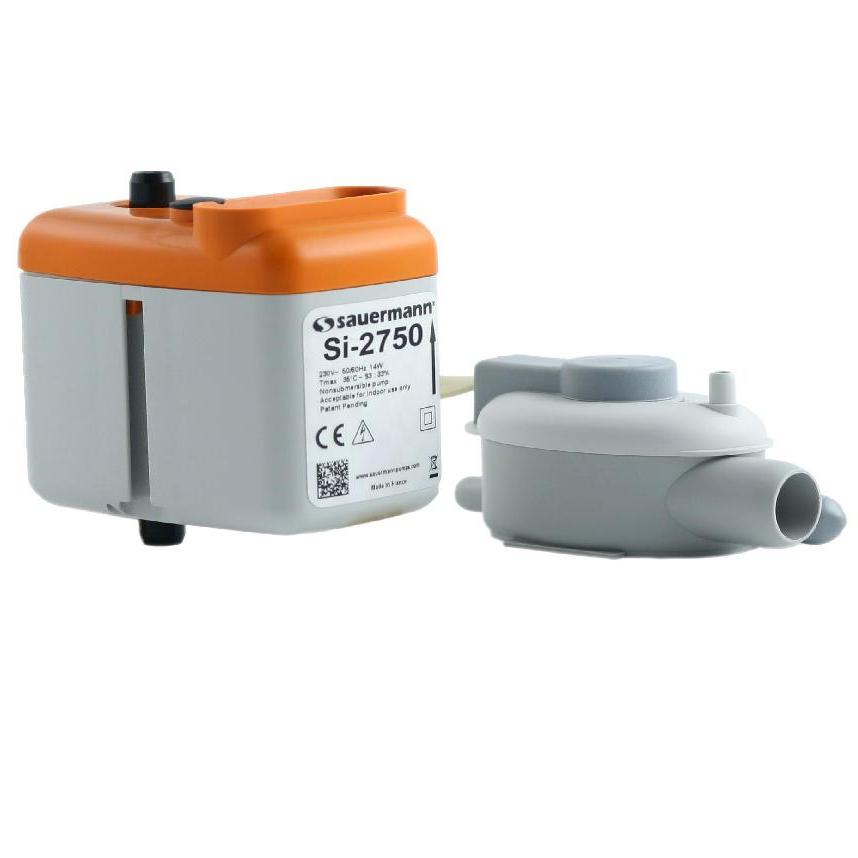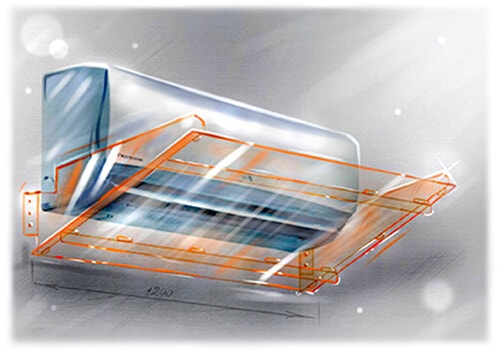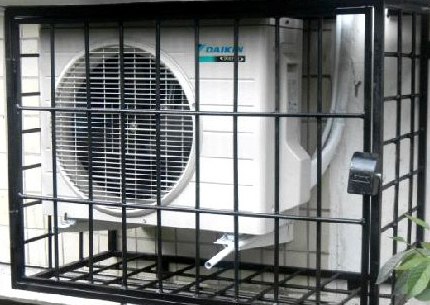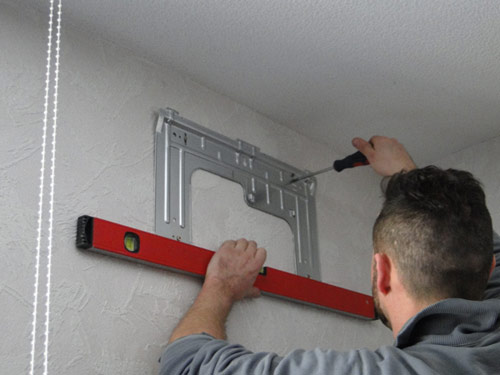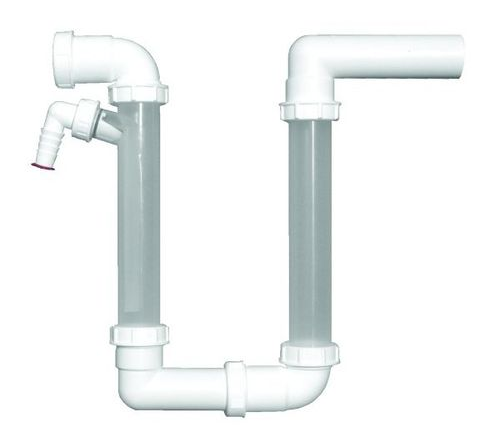The outdoor unit of the air conditioner is made of thick metal and is suitable for outdoor installation. However, it is not immune from the destructive effects of falling icicles and ice. Even if the housing remains intact, the risk of breaking the communication tubes remains high. Their restoration and refueling with freon can cost the owner of the split system 30-50% of the cost of the air conditioner. You can prevent damage to the device by installing a protective visor or a full-fledged anti-vandal box.
Do I need a visor over the outdoor unit
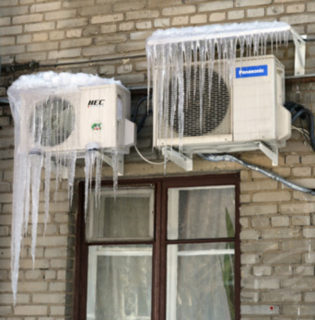
The desire to protect the external block of the split system and extend its service life is quite justified. It is the outer element with the compressor that is the most expensive part of the HVAC equipment. Protecting the external unit of the air conditioner with a visor is the most affordable and simple way to extend the life of the device.
It is recommended to install a canopy over the air conditioner in the following cases:
- The roof of the house is pitched. Ice and icicles form on the overhang. Small pieces of ice will not damage the device - they only leave dents on the case. However, large icicles can disable the entire freon supply mechanism.
- Formation of ice and snow caps on the device.
- Scattering of the old facade cladding.
- Placing an air conditioner on the ground floor of a multi-storey building. In this case, the damage from falling objects increases.
It is more difficult to protect the device from the destructive effects of vandals if it is installed on the ground floor.
Disadvantages and possible problems
The protective cover ensures reliable operation of the device under any external conditions. However, it can cause certain inconveniences:
- A significant accumulation of dirt under the canopy can impair the performance of the split system. In addition, birds often settle here. When it rains, the fan and heat exchanger are cleaned. An appliance protected by a visor will not wash naturally.
- Installation of the system on the fifth floor and higher requires the involvement of industrial climbers, which increases costs.
- If the installation of the device is unsuccessful, the air flow to the heat exchanger may decrease.
- The presence of a canopy makes it difficult to repair and replace the outdoor unit.
For these reasons, many air conditioner owners are reluctant to protect the outside of the air conditioner.
Diy visor for air conditioner
The air conditioner visor is a lightweight metal construction. To create it you will need:
- steel sheet;
- welding machine;
- corner with sides 25x25 mm, made of steel 4 mm thick.
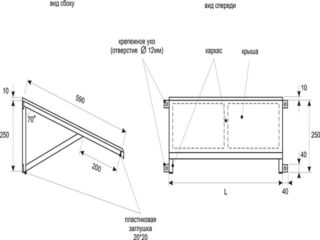
The corners will serve as a support for the entire structure. The protective part is made of steel sheet. If it is necessary to create a reinforced visor, choose iron of greater thickness or galvanized steel.
Before assembly, the structures are determined with the angle of inclination of the visor and its dimensions.
Step-by-step instruction:
- Measure the length, width and height of the air conditioner. Add 10 cm to the data obtained. The visor should not fit snugly to the device. There should be a significant protrusion at the top of the protective structure.
- Create a frame for the visor. For this, corners of 550, 250 and 230 mm are used. Angles 550 and 250 mm are welded to each other at an angle of 70-75 degrees.The slope of the visor relative to the horizon should be 15-20 degrees. Snow and ice should roll off the sheet metal well under its own weight. Then take the third corner 230 mm and weld it with one end to the free side of the corner 250 mm. The other end is connected to the center of the angle 550 mm. The resulting triangle will have a protruding side of 200 mm.
- Repeating the above steps, assemble the second part of the frame.
- The next step depends on the height of the air conditioner. For example, if it is on the ground floors, the structure itself can be assembled on the ground. When strengthening the structure, you will need 2 cross members. The side parts of the base are welded to the transverse parts. A sheet of iron of appropriate dimensions is attached from above. To do this, 4 holes are made in the upper corners and a metal sheet, and then the elements are bolted together. There should be rubber gaskets under the fasteners to prevent moisture from reaching the damaged edges of the holes in the steel sheet.
With a high height of the split system, it is more convenient to install the visor in parts.
First, the base is fixed on the wall from the sides of the air conditioner, and only then the transverse profiles and a metal sheet are welded.
Anti-vandal protection
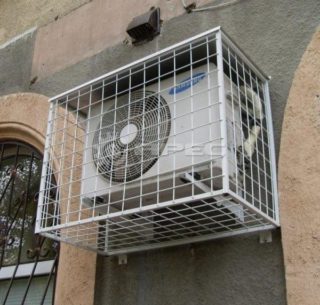
To protect the external block of the split system from vandals and children, a special grill is installed. Standard box specifications:
- length - 80 cm;
- depth - 50 cm;
- height - 60 cm;
- mesh cell size - 20x20 or 25x25 mm;
- wire diameter - 5 mm.
For the manufacture of the structure, you will need 2 corners of 600 mm each and 2 corners of 623 mm for vertical elements. Horizontal corners for face protection should be 800 mm long, for 2 lower side elements - 500 mm. There will be 2 corners of 550 mm to hold the visor.
After welding the air conditioner frame, a 25x25 mm protective mesh is attached to it. Mounting plates are welded to the rear corners on each side. The steel sheet is screwed onto 4 bolts, for which holes are pre-drilled in the frame and protective panel. Then the box is attached to the wall with an anchor.
Installing the air conditioner visor
Since the design of the visor has a certain windage, it is better to entrust the installation to professionals. However, residents of the first floors can install the visor on their own.
The complexity of the work lies in the need to accurately mark the attachment point. Also, at the time of fastening, the structure will have to be held in your hands. Therefore, when installing it yourself, it is better to enlist the help of another person.
The sequence of actions when installing the protective visor on the air conditioner:
- Mark the technological holes for the frame fasteners.
- Drill holes for anchors in the wall with a hammer drill or drill with a victorious solder. Drill for metal to make holes in the corners.
- It is better to fasten the visor to the anchor bolts of 8-10 mm.
- Insert the anchors into the holes obtained and put the frame with the holes on the thread of the fastener. To tighten the nut, 1 cm should remain. At this stage, the work is done by 2 people.
- Tighten all nuts on the anchors to the maximum. To facilitate and speed up work, it is better to use an electric drill with an appropriate attachment.
For reliable installation, at least 6 points of fixing the awning to the wall are required. The well-fixed structure provides reliable protection for the outdoor unit of the climate system.
Visors should be installed over air conditioners located on the walls of multi-storey buildings. This is due to the high risk of falling icicles and debris. For private one-story buildings, this threat is minimal, but it's worth playing it safe. Protection of the air conditioner from icicles, accumulating snow and vandals is the main task of the owners of split systems, which must be solved immediately after the installation of climatic equipment.

